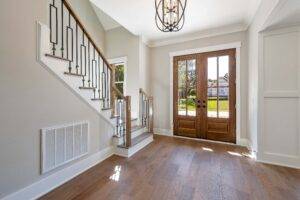 Internal Doors are typically constructed using lighter materials since they do not need to withstand external weather conditions. Common materials for internal doors include hollow or solid-core wood, MDF (Medium-Density Fibreboards), or composite materials. While external doors, on the other hand, need to be more durable and weather-resistant. They are often made from solid wood, metal, fibreglass, or other materials that can withstand exposure to the elements.
Internal Doors are typically constructed using lighter materials since they do not need to withstand external weather conditions. Common materials for internal doors include hollow or solid-core wood, MDF (Medium-Density Fibreboards), or composite materials. While external doors, on the other hand, need to be more durable and weather-resistant. They are often made from solid wood, metal, fibreglass, or other materials that can withstand exposure to the elements.
Internal doors are often designed with aesthetics and interior décor in mind. They may have various styles, finishes, and decorative elements to complement the overall look of the interior space. External doors on the other hand may prioritise functionality and security. They often have features like weather-stripping, reinforced cores, and sturdy locking mechanisms. The design might be more focused on durability and resistance to external elements. When it comes to security measurements, external doors play a crucial role in home security. They are designed to withstand forced entry and may include features like robust locks, deadbolts, and reinforced frames. Internal doors are generally less of a concern and their primary purpose is to provide privacy within a building.
External doors need to be weatherproof to protect the interior of the building from rain, wind, and temperature fluctuations. Their insulation features are designed to help maintain the temperature inside the building and reduce energy loss. Understanding these differences can help you choose the right type of door based on its intended use and the specific requirements of your building.
